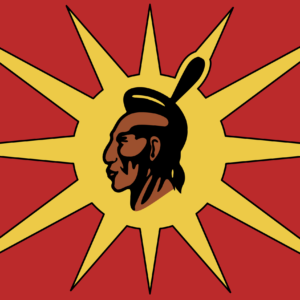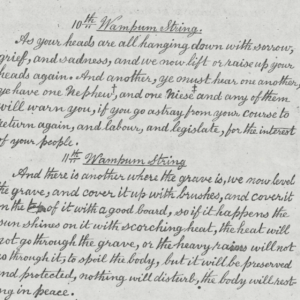New Minister of Crown-Indigenous Relations Gary Anandasangaree has a massive job ahead of him, steering the Canadian ship into a new era of reconciliation with Indigenous peoples. The work is tough, and the crowd often hard to please with the last two Ministers Carolyn Bennett and Marc Miller enduring a lot of public scrutiny from people within the Indigenous community — that they lacked the understanding, empathy and skills to carry out what was needed to get the job done.
Miller in particular was becoming problematic internally for Six Nations as he repeatedly offended elected officials, bypassing the council and ignoring protocol to have secret meetings with hereditary leaders.
While the Minister was massaging his ego to meet with the Haudenosaunee Confederacy Chiefs Council and the Haudenosaunee Development Institute — he failed to see that he was authoring his own undoing — picking a side and meddling in divisive politics internal to one of the Indigenous communities he was appointed to serve. The complete opposite of reconciliation.
Miller’s meddling eventually saw him rightfully and publicly reprimanded for carrying on divide and conquer tactics during a Q&A at the AFN General Assembly in 2022 by Six Nations Elected Chief Mark Hill — in front of Prime Minister Justin Trudeau — to the cheers of the rest of the elected Indigenous leaders in Canada.
Millers response to Chief Hill’s rebuke would prove disastrous. Miller responded to the Chiefs callout over divide and conquer tactics by repeating long-debunked divisive rhetoric about hereditary leaders being ‘removed from the Six Nations Council House in 1924 at gunpoint’. Miller had personally inserted himself in internal politics — deciding who was in the right and who was wrong at Six Nations without having his facts or history straight. This proved a breach of his mandate as Minister and disaster for further relations with the largest First Nations community in Canada.
Now, Anandasangaree steps into focus as the new Minister. With a background in human rights law and activism, often pointed toward empowering youth in his own Tamil community Anandasangaree brings a different level of capacity to the role.
Speaking just after his appointment the Minister told reporters that his family immigrated to Canada from Sri Lanka 40 years prior.
“What I bring here is that lived experience of what survival means, what going through oppression and colonialism means and I bring it in the most personal sense,” said Anandasangaree.
The new Minister previously visited Six Nations, getting a first hand look at the on-reserve water crisis as he assisted a local charity installing drinking water treatment systems in a family home on the Territory.
Anandasangaree was invited to come to the Territory by the Red Feather Foundation to see first hand what the lack of infrastructure on First Nations reserves in Canada practically looks like for residents and the extra hurdles Indigenous people on-reserve have to jump just to get a clean cup of tap water.
For Red Feather, raising awareness about the problem of on-reserve drinking water has been their rallying cry — working to amplify the messages of Indigenous water protectors like Autumn Peltier — and bring them together with Indigenous organizations and other people with the means to find a real solution while First Nations wait for federal officials to move through policy and red tape.
The Healthy First Nations initiative is a shared project in conjunction with two Six Nations charities — both the Red Feather Foundation and with support by the Dreamcatcher Charitable Foundation. The project has installed over 300 clean drinking water systems in local homes on Six Nations. According to Red Feather, they sent invites out to multiple MPs and Anandasangaree was the sole political representative that responded with any interest in learning about the water situation at Six Nations. Red Feather hosted Anandasangaree on Six Nations and brought him through an installation for a drinking water treatment system in one local home. The Minister helped install the system and was able to sample some of the water once it had been treated.
The Healthy First Nations initiative has installed hundreds of water purification systems in on-reserve homes across Ontario — most recently visiting the community of Eabametoong First Nation just prior to a July 5 state of emergency being declared following a catastrophic fire at the community’s water treatment plant that left the entire First Nation without running water. Hundreds of local residents were evacuated to Thunder Bay and Niagara Falls. One person was arrested and is now facing arson charges related to the water treatment plant fire.
In the meantime — as federal government officials wade through protocols and processes — Indigenous organizations like Red Feather, Healthy First Nations and the Dreamcatcher Charitable Foundation are hoping the work they are doing on the ground can be unified with the work of politicians willing to partner and support that work.
Anandasangaree may just be the Minister to get that process underway. With a background in human rights law the new Minister also has a history of campaigning against human rights abuses during the Sri Lankan Civil War, has assisted at the UN Human Rights Council, worked with the United Way and spent time assisting youth and entrepreneurs in the GTA. All hopeful indications that Anandasangaree may be bringing along with him an element of what has been missing at the Ministry under Trudeau.
If his work on the ground installing water treatment systems on Six Nations is a small twinkle of what is to come — it could be the kind of fresh take on facing the truth of Canada’s colonial systems while working toward a true era of Indigenous communities and the feds being reconciled.






